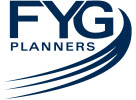Peter Mancell
I don’t have to tell you costs are a big factor when running a financial planning business.
I’d argue it’s why over 80% of the industry are now shadowed under the wing of a bank or institution. Economies of scale are a great help in driving costs down, but if you’re focussed on your client you want to ensure it’s the client who is the primary beneficiary of cost efficiencies and no one else!
If you’re outside an institution, driving those costs down is going to play an important role in determining the success of your business. Lower costs for clients means being more competitive and should help to improve their investment returns.
Being able to demonstrate better potential outcomes to your clients is particularly satisfying, but where do those efficiencies that result in better client results come from? Your AFSL should be your first avenue to helping you minimise costs.
I’ve always believed your cost efficiencies should first come through your licensee. I’ve found there are three primary areas where a licensee can drive cost efficiencies for advice businesses:
1. Platform pricing For advisers wanting to run an efficient business, platforms are almost always a necessary evil. And while platform providers may not appreciate it being said, few do anything special. So paying extra only results in a bigger drain on your clients’ returns.
Driving platform costs down is hugely important, but it also shouldn’t be driven by any bias towards specific platforms or investments. The important thing is for the licensee to drive the best bargain across multiple platforms to ensure the adviser and the client benefit.
2. Investment process A low cost investment process will inevitably lower costs for your clients and for your business.
There’s still no fund or manager that consistently outperforms the market year in/year out, so you’ll need to chase winners and unless you have a crystal ball that’s also near impossible. So selling your clients that strategy only ensures they’ll inevitably underperform and active fund fees will sting them more for the privilege. Passively managed funds will result in lower client costs and ensure your business doesn’t waste time and money on needless research.
3. Professional indemnity insurance Your most serious expense as regulation requires advisers hold PI insurance, but has your AFSL secured the best deal with a stable premium or have you battled against an ever increasing premium history?
If cost isn’t a problem, what about the excess and the potential cost? Are you the one left shouldering the excess? And what’s your level of cover for a simple mistake like an excess super contribution? Finally, an almost forgotten consideration, does your AFSL’s PI insurance cover you for all the advice you’ve ever given, or just advice given with that licensee?
Remember, it’s the AFSL’s job to drive the lowest price and best coverage for the planners under its license. At the heart of it your AFSL is a service provider. It needs to provide great service at the lowest possible cost to you, so you can provide the great service at the lowest possible cost to your clients.
Peter is the managing director of FYG Planners. He is a Certified Financial Planner (CFP) who started in the financial services industry in 1981. A specialist in business development, Peter’s role primarily focuses on providing strategic planning advice to FYG Planners on its future direction, improving the technical skill base of the group, identifying business growth opportunities and services that can be developed for use by FYG Planners Advisers. Peter is also the founder of Mancell Financial Group, one of only six CEFEX certified fiduciary financial advisors in Australia.
Via: No More Practice
Looking for Australia’s best financial planning AFSL? We might be it.
